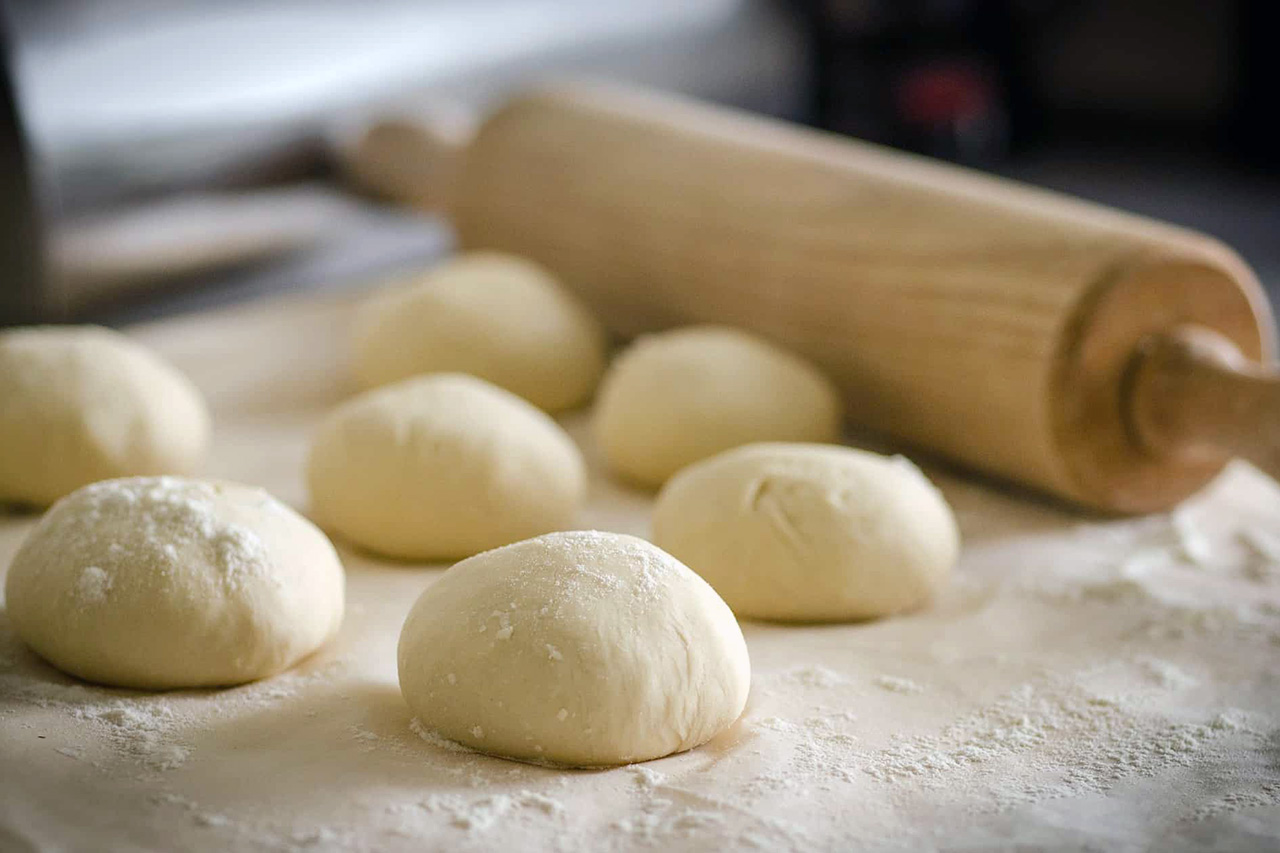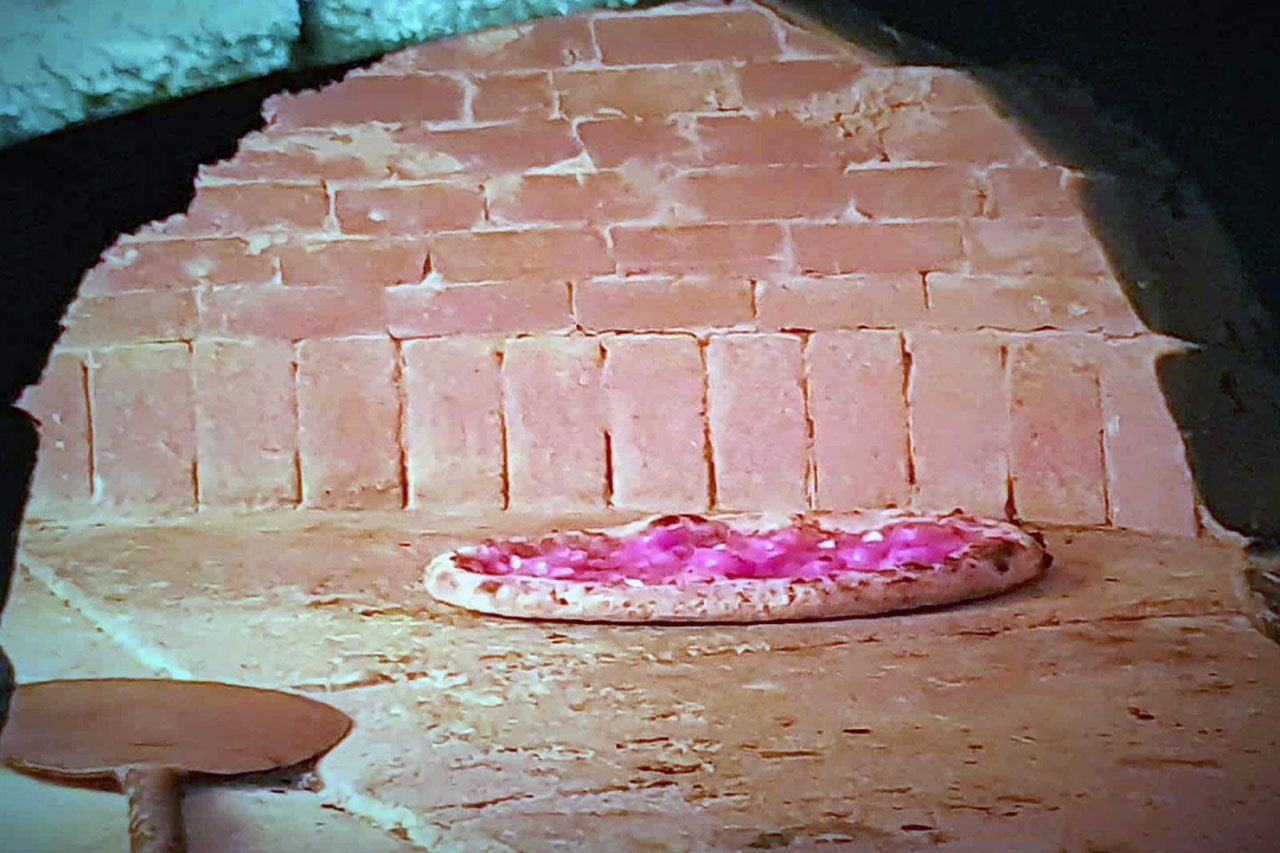A food tradition born in Tramonti that, over time, has spread throughout the Coast.
November 1st, 2023. By Francesca Faratro
The pizza triumphs on the Amalfi Coast’s tables in the first days of November. Fragrant and seasoned in a simple way, with a leavening that varies from six to forty-eight hours, the disc of dough consumed all over the world is associated with tradition on the day of the second of November, on the occasion of the commemoration of the dead.
Preparation
Keeping the tradition alive, where it all originated, is the town of Tramonti, the green lung of the Amalfi Coast, spread over no less than thirteen hamlets nestled in a landscape rich in nature, trees, and vegetation. The anticipation that adds to the pleasure lies in the preparation: as early as a few days before, households prepare to draw up a shopping list, adding whole-wheat flour, tomatoes, and yeast, whether the latter is brewer’s or mother’s yeast, in the queue.
In the houses, dominated by ancient ovens made of stone, it is customary to light the flame that will cook the pizzas early in the morning: they are baked in a quantity that feeds the entire family, but the remaining excess is distributed to friends and neighbors. At the same time, a few slices are consumed the following day, reheated when the flavor of the topping ingredients is even more emphasized.

The pizza of Tramonti
Tramonti has been known for pizza production since the Middle Ages when, in rural ovens, panelle made with rye, millet, and barley flour were prepared and seasoned with spices and a generous amount of lard, the fatty part used to harden the dough.
Pizza makers used to add wild fennel seeds to this mixture to give an extra flavor and to help digest the product. In those times of poverty, pizza represented a complete meal to feed families and a testament to the art of the pizza maker, hidden among the skilled and experienced hands that caressed the dough and accompanied the rising process.
The king ingredient: the tomato
There are numerous testimonies of ovens found in the houses of Tramonti dating back to the early twentieth century. Inside these stone chambers, people baked biscuit bread made with whole wheat flour, and whenever the baking of bread took place, the subsequent baking of pizzas also took place.
To season the base as per tradition, cherry tomatoes, known as sponsilli, kept hanging under the porches, or Re Fiascone tomatoes, a local variety with a unique flavor. Olive oil, a few cloves of garlic, lard, and a cube of lard was added. Fior di latte was not used because this ingredient, sold at a high price, was only intended for marketing.
Pizza on the Day of the Dead
Symbolically linked to the color of mourning and the image of the grain of wheat dying and rising from the earth, pizza, referred to as black, is so named for the flour that makes it up. Differentiating it from pizza prepared year-round is the use of whole-wheat flour, which is darker in hue than regular, more refined flour. The tradition of eating it on the day of the commemoration of the dead is all-female and is linked to the habit that housewives have adopted over the years.
Since the Tramonti cemetery is far from the vast majority of the hamlets and can only be reached on foot, women, to speed up the time and to offer the family a convenient meal to eat on the way, used to take the pizza with them, often these also having to deal with the night vigil that saw them busy setting up the graves: they would bring in a conspicuous quantity to secure the meal for longer. The pizza, cooked even two days before, remained intact and ensured a complete and healthy meal for the following days.

From the home to the pizzeria
Later, when the tradition became entrenched in local customs, Mattiuccio Apicella, one of the first bakers from the Corsano hamlet, had a good idea. Given the growth in demand for pizzas on that occasion, he decided to gear up. In collaboration with Aniello and Cangiull, who picked up the pizzas still hot at the bakery, he sold them along the road that connected the cemetery.
The discs of dough, distributed along the route, were carried inside wicker baskets, folded in on themselves, and thus called portfolios and packed inside a thick paper capable of containing the toppings. To embellish the final flavor, salted anchovies were often added instead of animal fats to respect the fasting from meat.
The spread throughout the Coast
This custom, which originated in Tramonti, later spread to the rest of the Amalfi Coast, becoming a tradition for neighboring towns. Even today, numerous pizzerias churn out pizzas for lunch, many of which accept reservations and requests well in advance.
“Thinking about the day of the commemoration of the dead without black pizza for me is something unthinkable! – says an excited Francesco Maiorano, owner with his wife Pamela of the San Francisco trattoria in Tramonti and a Slow Food Alliance pizzaiolo – I was born and raised with this tradition, which is strongly linked to my territory. Since we opened our place twenty years ago, not a year has passed without preparing it. We season it respecting the original proposal: a disc of dough made with whole wheat flour and a topping made with tomato, garlic, oregano, evo oil, and anchovies from Cetara.”
The pizza “of the dead,” consumed for convenience without ever sacrificing taste, entertained, cheered, and accompanied during the journey and, between one chit-chat and another, has been handed down to this day to be still enjoyed with its unique flavor between taste, authenticity, and memories!
